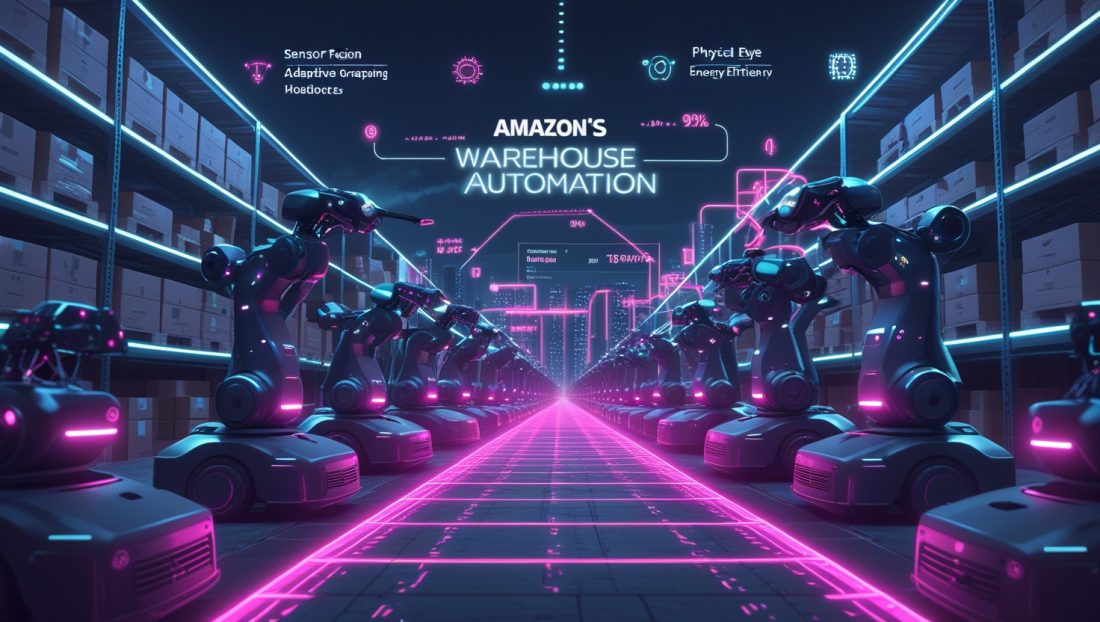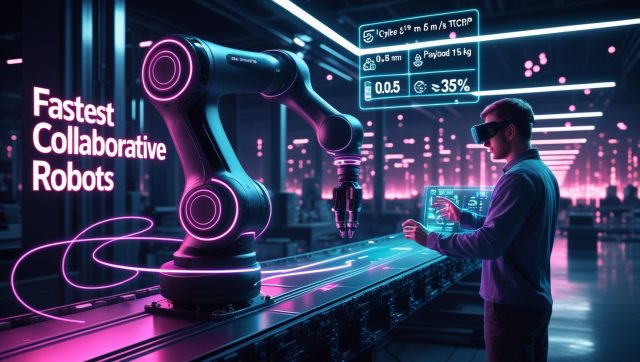The Warehouse Automation Imperative
Amazon’s fulfillment centers operate with 750,000 robots handling 75% of customer orders—an evolution since acquiring Kiva Systems in 2012. This shift isn’t about novelty but necessity. Bank of America estimates these machines will generate $16 billion in annual savings by 2032, cutting labor costs while improving efficiency. What started as an advantage has become an essential part of operations.
Take Sarah, a 5-year fulfillment associate in Spokane. When Vulcan—Amazon’s first tactile-sensing robot—arrived, it eliminated her ladder climbs for fragile items. Yet within a year, half her team was reassigned. “I’m now a ‘robot mediator’ fixing their mistakes,” she says. “We have one robot per two workers today. Soon, it’ll be 1:1.” Her experience embodies warehouse automation’s dual impact: soaring productivity paired with profound workforce disruption. For a deeper look at how robotics is transforming job roles, explore how China’s industrial robot dominance is reshaping global manufacturing.
Inside the Robotic Arsenal: Next-Generation Technologies
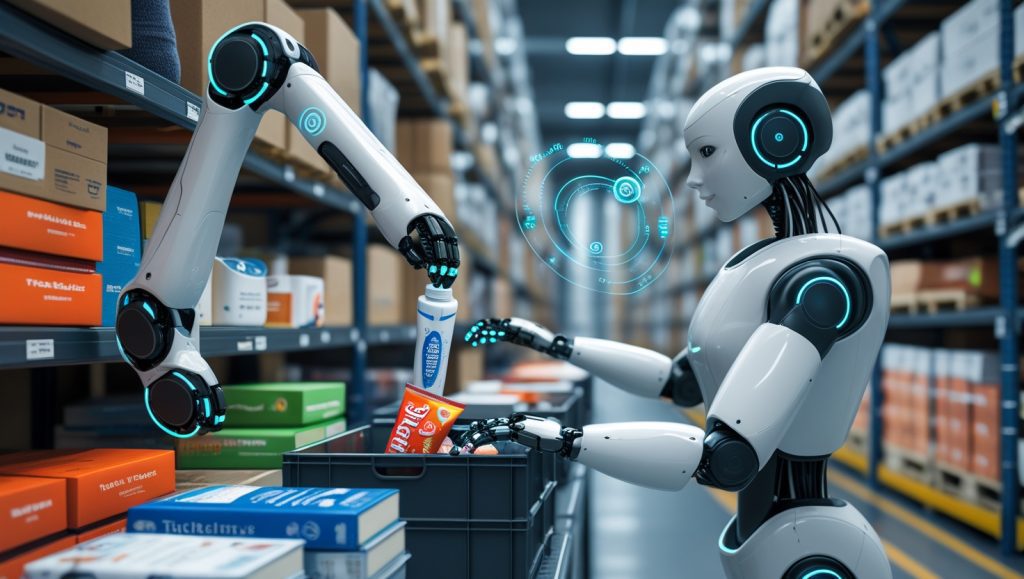
1. The Tactile Breakthrough: Vulcan’s Sensory Intelligence in Warehouse Robotics
Unlike earlier “numb” robots that “smashed through obstacles,” Vulcan mimics human dexterity. Its end effector—resembling “a ruler fused with hair straighteners”—adjusts grip pressure in real time: gentle for toothpaste tubes, firm for textbooks. This allows it to handle 75% of inventory types while targeting ergonomic “dead zones” like 8-foot-high bins.
“Vulcan fundamentally reimagines manipulation,” says Amazon’s Aaron Parness. “It’s feeling the world, enabling capabilities impossible until now.”
Trained on thousands of physical objects—from socks to fragile electronics—Vulcan learns from failures, building physical intuition “like a child.” Early deployments in Hamburg and Spokane show 20% faster stowing speeds with 30% fewer damaged items. This tactile precision sets a new standard for warehouse robotics efficiency, reducing errors that cost retailers billions annually. By leveraging advanced AI, Vulcan adapts to diverse product shapes, making it a game-changer for high-volume logistics.
For comparison, cloud-connected humanoid robots from NVIDIA showcase similar AI-driven adaptability, but Vulcan’s focus on tactile feedback is uniquely suited for Amazon’s diverse inventory. To understand the broader implications of such AI advancements, check out Forbes’ analysis of AI-driven logistics innovations, which highlights how sensory intelligence is reshaping supply chains globally.
2. The Support Fleet: Tipper, Pegasus, and Six-Sided Scanner for Automated Warehouse Operations
- Pegasus: Mobile sorters moving 1,000 packages/hour, cutting manual sorting 80% in Delaware’s 4,500-worker facility.
- Six-Sided Scanner: Autonomous label verification, eliminating handheld scanners.
- Cardinal: A robotic arm packing boxes “like Tetris,” shaking floors with its force.
These bots target OSHA’s top warehouse injury risks: repetitive lifting and awkward postures. At Amazon’s renovated Wilmington center, they’ve reduced worker walking by 7 miles daily. The support fleet’s efficiency stems from seamless integration with Amazon’s broader AI ecosystem, optimizing every step from sorting to packing. Pegasus, for instance, uses predictive algorithms to anticipate package flow, a technique echoed in autonomous mobile robots dominating logistics.
This fleet’s ability to reduce physical strain aligns with global trends in workplace safety, as seen in OSHA’s 2025 guidelines on robotic safety integration, which emphasize reducing repetitive injuries through automation. The result? Faster, safer warehouses that redefine operational benchmarks.
3. System-Wide AI: The “Physical Internet” Backbone Powering Smart Warehouses
Robots train using real-world failure data. As Principal Scientist Mike Wolf explains: “Every mis-pick feeds our models. We teach physics, not just object recognition.” In next-gen facilities like Shreveport’s SHV1, three systems sync seamlessly:
- Sequoia: Automated Storage and Retrieval (ASRS) with plastic totes replacing fabric pods.
- Robin: Vision-guided arms moving irregularly shaped packages.
- Proteus: Autonomous mobile robots navigating human spaces with expressive “eyes.”
This integration slashes order processing time 25% while enabling 11-hour order-to-ship cycles. The “physical internet” concept—where AI orchestrates robots like data packets—creates a dynamic, responsive warehouse environment. This mirrors advancements in AI-driven supply chain management, where real-time data optimizes logistics. For a broader perspective, McKinsey’s report on smart warehouses details how such systems are cutting costs and boosting efficiency across industries, positioning Amazon as a leader in this space.
Labor Transformation: Efficiency vs. Employment
The Unspoken Workforce Contraction
Despite Amazon’s “job creation” narrative, data reveals a stark trend:
- Fulfillment Centers: Staffing dropped 8-16% (2022-2024) despite 20% package volume growth.
- SHV1 in Shreveport: Operates with 1,133 humans vs. 3,000+ at comparable non-automated sites.
- Management Cuts: 15% reduction planned through “increased individual contributor ratios.”
“Accounting for productivity gains, fulfillment centers shed 25% of potential jobs in two years,” calculates labor researcher Benjamin Fong.
This contraction reflects a broader trend, as seen in why robots solve the labor crisis, where automation fills gaps but displaces traditional roles.
Retraining: Solution or Stopgap?
Amazon’s counterargument hinges on upskilling:
- Career Choice: $1.2 billion invested since 2019 for 300,000 workers to train in cloud computing, AI, and robotics.
- Mechatronics Apprenticeships: 40% wage premiums for maintenance roles.
Yet Delaware’s experience reveals limits. When automation arrived, veteran picker Miguel Rodriguez transitioned to robotics maintenance—a success story. But his coworker Jasmine, a 52-year-old single mother, lacked technical aptitude and accepted a buyout. “They offered coding bootcamps,” she says, “but I’ve worked with my hands for 30 years.”
MIT’s Work of the Future initiative confirms: “Automation’s winners are those with technical aptitude. The displaced often lack pathways.” With the EU facing a 1.8 million tech-worker shortage by 2030, scalability remains questionable. This challenge is echoed in why STEM robotics competitions are fueling innovation, highlighting the need for accessible tech education.
Strategic Implications: Beyond Cost Reduction
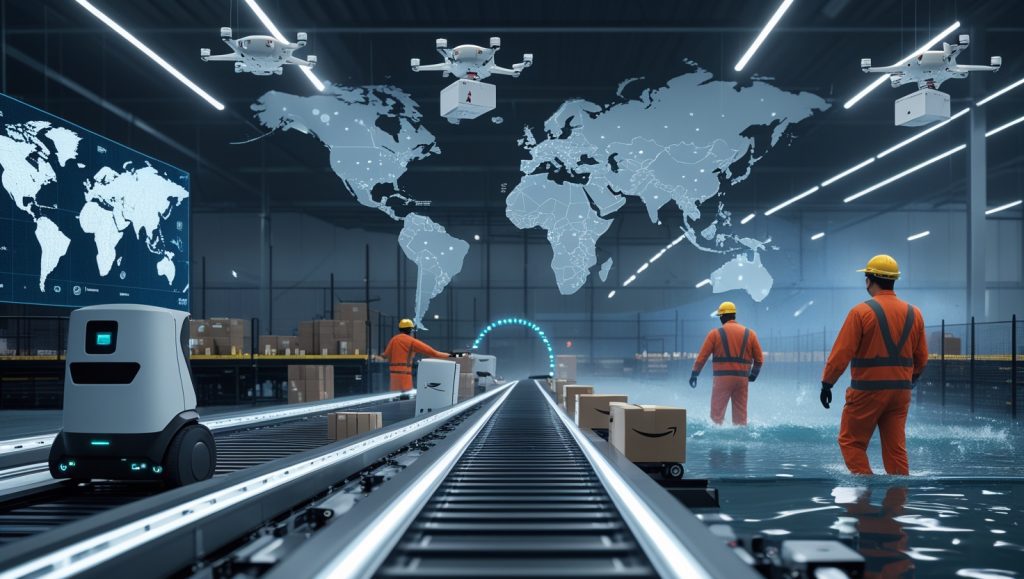
1. The Delivery Speed Arms Race in E-Commerce Logistics
Automation enables same-hour delivery experiments in urban hubs. By integrating drone tests in Texas/Arizona with Vulcan-equipped centers, Amazon aims to cover 80% of the U.S. with same-day delivery by 2027. This aggressive push aligns with the broader logistics race, where speed is a competitive edge. Drone delivery networks are scaling rapidly, with Amazon leveraging its robotics to outpace rivals. The focus on ultra-fast delivery taps into consumer demand for instant gratification, driving e-commerce growth. This strategy also reduces reliance on third-party logistics, strengthening Amazon’s market dominance.
2. The “Automation Lock-In” Advantage for Proprietary Robotics Systems
Amazon’s in-house robotics manufacturing—like its 350,000 sq ft Westborough, MA facility—creates proprietary moats. Unlike rivals using third-party bots, Amazon customizes systems like Vulcan for its exact workflows, saving $700 million annually in vendor fees. This lock-in ensures competitors can’t replicate Amazon’s efficiency without massive investment. The approach mirrors robotic microfactories for on-demand manufacturing, where bespoke systems drive cost savings. By controlling the robotics pipeline, Amazon secures a long-term advantage, even as competitors adopt Exotec’s flexible automation solutions.
3. Human Resilience: Where Robots Still Fail in Complex Warehouse Scenarios
Even advanced systems face “edge cases”:
- Vulcan struggles with round objects over 8lbs and “co-extracting non-target items.”
- During a 2024 tropical storm, flooded truck yards required human intervention to reroute shipments.
As The Conversation notes: “Lights-out warehouses remain fantasy. When sensors fail, humans are the firewall.” This limitation underscores the need for human-robot collaboration, a theme explored in soft humanoid robots for home safety, where human oversight remains critical. Amazon’s reliance on human problem-solving highlights a gap that even cutting-edge AI can’t fully bridge, ensuring workers remain essential in complex scenarios.
The Workforce Balancing Act
| Metric | Pre-Automation (2020) | Current (2025) | Change |
|---|---|---|---|
| Robots Deployed | 200,000 | 750,000+ | +275% |
| Avg. Fulfillment Staff | 3,634 per site | 3,256 per site | -10.4% |
| Order Touchpoints | 30% | 75% | +45pp |
| Retail Operating Margin | 3.2% | 5.4% | +2.2pp |
3 Unresolved Tensions
- The Productivity-PR Dilemma
Investor calls tout “reduced labor dependency” while press releases emphasize “job enhancement.” This dissonance fuels regulatory scrutiny, especially after UK strikes over automation-driven layoffs. The tension mirrors debates in why robot subscription services are booming, where companies balance efficiency with public perception. - The Vendor Fragility Trade-off
Custom robots boost efficiency but increase vulnerability. As one engineer admits: “If Vulcan’s AI misjudges force, whole pods jam. Off-the-shelf bots were slower but simpler to fix.” This trade-off is similar to challenges in self-healing robotics, where complexity can hinder reliability. - The Chokepoint Paradox
Labor organizers target sortation centers (SCs) as automation vulnerabilities. Yet Amazon’s 4-hour SC shifts with “flexible” schedules create high turnover, complicating unionization. As Philadelphia worker Paul Blundell notes: “These facilities reconfigure every 8-12 months. You can’t build worker solidarity when teams constantly scatter.” This dynamic is explored in why robots are rewiring fitness forever, where automation disrupts traditional workforce structures.
The Path Forward: Human-Machine Symbiosis?
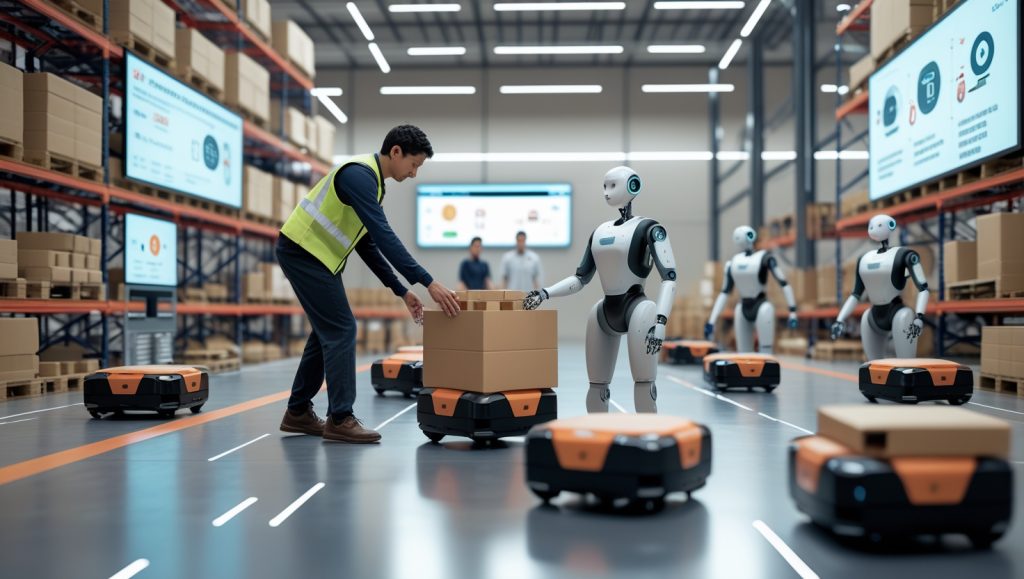
Warehouse automation will accelerate—Amazon plans 1 million robots by 2030. The question isn’t whether robots will dominate logistics, but how companies manage the transition:
- For workers: Upskilling must address real-world barriers. Delaware’s “Robotics Assistant” role—a 6-month onsite certification—increased retention 35% by avoiding abstract coding skills.
- For competitors: Systems like Exotec’s Skypod offer Amazon-level density without proprietary lock-in, processing B2B and B2C orders in one flow.
- For policymakers: Germany continues to explore tax incentives and workforce retraining strategies to address automation-driven labor shifts. While no specific ‘Automation Transition Tax Credit’ exists, initiatives like skilled worker tax rebates and funding for vocational training demonstrate regulatory approaches aimed at easing the transition for displaced workers.
“People will always be part of the equation,” insists Amazon Robotics’ Tye Brady. “Machines take the mundane; humans handle common sense.”
Yet with Vulcan’s tactile fingers now stowing goods Sarah once handled, the human-machine balance remains Amazon’s defining challenge. As margins climb toward projected 11%, the true cost of warehouse automation will be measured in workforce transitions—not just quarterly savings. For more on this balance, see why robotics is the secret weapon against climate change.
The Bottom Line
Amazon’s robotics surge reveals an uncomfortable truth: warehouse automation is inevitable for competitive logistics, but its human impact is negotiable. Success requires more than technological prowess—it demands reimagining workforce development at societal scale.
Where should automation strike next? Subsribe to our “Newsletter” for ongoing analysis of robotics ethics, job transitions, and economic impacts. Your workforce deserves more than efficiency—it deserves evolution. For a related perspective, check out AI-driven retail transformation.
